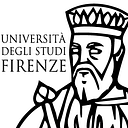Introduction. East and West Entangled (17th-21st Centuries)
From Firenze University Press Book: East and West Entangled (17th-21st Centuries)
Rolando Minuti, University of Florence
Giovanni Tarantino, University of Florence
The original idea for this volume arose from a conference on entangled EastWest histories that was held in February 2019 at the SAGAS Department of the University of Florence. Scholars from Chinese, Korean and Japanese universities participated alongside colleagues from Western universities. To complement the revised versions of some of those conference papers, several chapters exploring entanglements between trends in Italian research in Asian cultural history and the lines of interest of Asian scholars on Italian and European culture were specially commissioned for this volume. T he Oxford English Dictionary defines the verb «to entangle» as meaning «to twist, interlace, or mix up in such a manner that a separation cannot easily be made». It derives from the noun «tangle», which is a species of seaweed. As Ralph Bauer and Marcy Norton have recently recounted, one of the earliest documented uses of «entangle» is in Richard Eden’s Decades of the New World (1555), a translation of Peter Martyr d’Anghiera’s history of European encounters with Native America. Eden writes that, while reconnoitring Cuba during the second voyage, Columbus’s men tried to venture inland into a vast tallgrass plain, and soon became «soo entangled and bewrapte therin, that they were scarsely able to passe a myle, the grasse beinge there lyttle lower then owre rype corne». American nature not only entangles the European conquerors physically, it also «defies the imposition of a European order of things». The word’s etymological roots remind us of the importance of moving beyond the «epistemologically indefensible nature-culture binaries» that sprang up hand in hand with European colonial ideologies seeking to legitimate the subjugation of indigenous peoples (Bauer and Norton 2017). In the global or globalised age, a culture is no longer regarded as a discrete entity, but rather as a hybrid formation that interacts with other cultures in an incessant process of multidirectional exchange. Eurocentric views that construct «a European singularity dating back to antiquity» and that fail to acknowledge the ways in which Europe has been influenced by the rest of the world have been accused of «theft of history» (Goody 2006). Translocal perspectives have led to a critical rethinking of categories such as «nation» and «civilisation», and many historians previously averse to theorisation have come to recognise its importance. «History has to reorient», as the historian and sociologist Andre Gunder Frank observed (1998). In modern cultural studies, space is not just physical or material, but also embraces a wide range of spaces — imagined, ascribed, mental, textual, corporeal, literary, and so forth. If it is to be inventive, a transcultural history of ideas, religion, environmental change, economic flows, urbanisation, and emotions needs to work with these very different notions of space, «globally encompassing understandings of the past» while remaining attentive to local particularities (Sachsenmaier 2006, 452). Because historical research like this covers very different topics and spatial constellations, there is also a great diversity of methods: «ecumenical histories», «connected histories», «entangled histories», and «histoire croisée» are just some of the neologisms coined to denote attempts to offer more plural views of the past that incorporate alternative perspectives. However, a clear shift towards more transcultural research can be observed across the gamut of approaches. Of course, the task is not an easy one. In a provocative interview with Cromohs, Sanjay Subrahmanyam perceptively notes that transcending comparative history and redrawing geographical boundaries in an innovative way does not mean that «we replace one set of rigid boundaries (say, of the nation-state) with another» but rather we «multiply and cross archives and other primary sources, in keeping with the complexity of the problem» (Barbu 2017–2018, 124). As Dominic Sachsenmaier has aptly pointed out, «the claim that scholarship needs to become more multi-conceptual, multi-lingual and multi-angled» is not trivial, as it requires historians’ voices «to become increasingly dialogical in nature and actively to include other interpretations of the past within one and the same narrative» (Sachsenmaier 2006, 462–63). T he writing of entangled histories presupposes an interest in «the agentive capacities of all actors», especially the ones traditionally ignored by Westerncentric historiographic paradigms, with the sources all too often being «written by the winners». Unlike some transnational histories that still look exclusively at Europeans’ representations of and impact on others, «entangled histories attend to the multiplicity of sources, agencies, directions of influence, and modalities of intercultural connectedness» (Bauer and Norton 2017, 3). They require a «decolonization of thought» (Viveiros de Castro 2014).
DOI: 10.36253/979–12–215–0242–8.02
Read Full Text: https://books.fupress.it/chapter/introduction-east-and-west-entangled-17th-21st-centuries/14110
